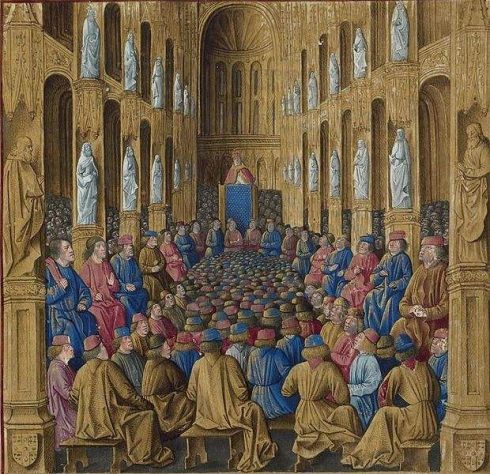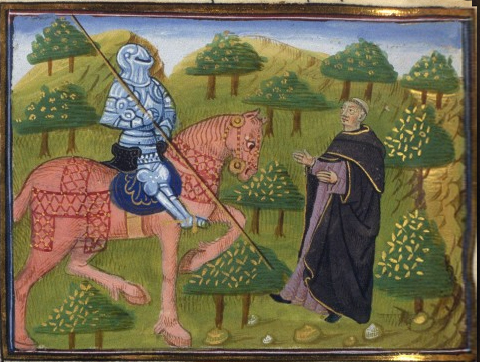Before it gave up its attention to the holy war, the council [of Clermont] at first considered the reform of the clergy and ecclesiastical discipline; and it then occupied itself in placing a restraint upon the license of wars among individuals. In these barbarous times even simple knights never thought of redressing their injuries by any other means than arms. It was not an uncommon thing to see families, for the slightest causes, commence a war against each other, that would last during several generations; Europe was distracted with troubles occasioned by these hostilities. In the impotence of the laws and the governments, the Church often exerted its salutary influence to restore tranquility; several councils had placed their interdict upon private wars during four days of the week, and their decrees had invoked the vengeance of Heaven against disturbers of the public peace.
The council of Clermont renewed the truce of God, and threatened all who refused “to accept peace and justice” with the thunders of the Church. One of its decrees placed widows, orphans, merchants, and laborers under the safeguard of religion. They declared, as they had already done in other councils, that the churches should be so many inviolable sanctuaries, and that crosses, even, placed upon the high roads should become points of refuge against violence.
Joseph François Michaud, The History of the Crusades of the Crusades, trans. W. Robson (New York, Redfield, 1853), vol. I, 46-7.











